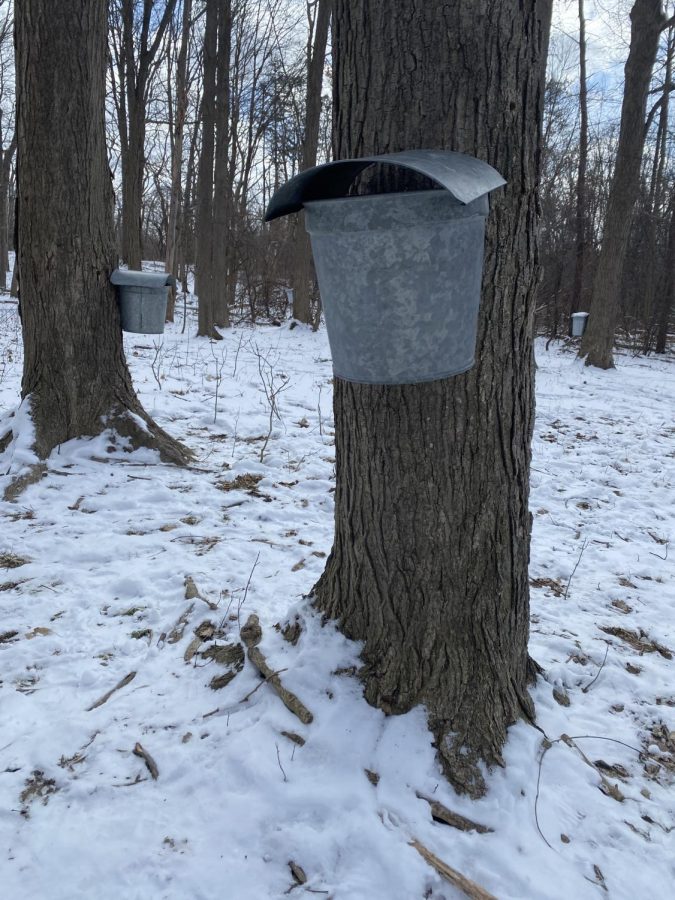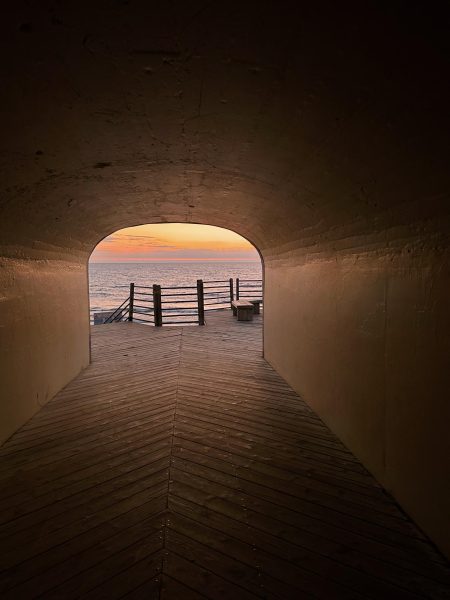Tapping in to Syrup Season
Sugary, sweet, maple syrup season is upon us.
Although collecting sap, boiling it down, and packaging it may be a lengthy process, it is well worth the time and effort for the delicious treat.
The first trees that were tapped were by Indigenous Americans. Legends and stories differ from tribe to tribe, and when European settlers arrived, syrup and tapping trees became a hit with them too.
Late winter into early spring is the best time to tap maple trees. This is when the temperature at night goes below freezing and the temperature during the day averages around 40 degrees. This is usually when sap in the tree is flowing freely and the most sap is collected.
To start the process, find a maple tree. The best tree to make syrup is the Sugar Maple because of its high sugar content of around 2%. Other maples can be tapped as well; however, the sugar concentration will be slightly less, and there might be a difference in taste between the syrups.
Collecting sap can be done multiple ways. Using a tap and a bucket is the traditional method; it is done by drilling a tap or multiple taps into a tree. The more modern way to collect the sap is through tubes. Tubes connecting to the taps can be filtered into buckets or led into a culminating area for the sap to be stored before boiling.
Allison Posner, a naturalist at the E.L. Johnson Nature Center in Bloomfield Hills, discussed her favorite part of the sugaring process: tapping.
“Once you drill the hole and watch the sap flow from the tree it’s really exciting. It’s like all my hard work has paid off.” Posner said.
The boiling process is lengthy. Roughly 40 gallons of sap makes one gallon of syrup, so the water in the sap needs to boil down for hours to get the right consistency and taste of the syrup. The syrup is done boiling when the remaining part is two-thirds sugar or when the temperature is seven degrees above the boiling point.
There are different methods for boiling the sap down. For smaller amounts of sap, boiling outside on an open flame is the best bet. Boiling outside is a better option than boiling inside to keep the steam from peeling paint or wallpaper.
For larger scale boiling, sugar shacks are a common option. The Johnson Nature Center has 164 tappable trees in its sugarbush and a sugar shack to accompany it.
Brian Klosterman, the Operations Leader at the Nature Center, works in the sugar shack.
“This machine (the Evaporator) will have 20 gallons of water that will evaporate and process it out, which gives me a half a gallon of syrup in one hour. But that’s if I’m roaring the fire.”
The sugar shack is also running and producing the syrup multiple days a week.
“Right now [it runs] Tuesday through Thursday. On a day like today, we will have it running all day,” Klosterman said.
Although labor intensive, the reward is fully worth the time and hard work. Newcomers to sugaring can pick up on it fairly quickly, as it isn’t extremely complicated.
Garrett Johnson is also a Naturalist at the Johnson Nature Center.
“My advice would be to just go for it. I think there’s a lot of information out there, but the basic process of getting sap, heating it up, and making syrup is pretty straightforward, and as you go through the process, you will see the little details to refine your process, and it’s an art you can keep building on. But just go for it and see what happens,” Johnson said, sharing his advice for new sugarers.
The Johnson Nature Center has “Sap Happy” events through the month of March to give people the chance to experience the sugaring process.
Next year, when sugaring season comes around again, don’t wait. Get going to have breakfast after breakfast of delicious maple syrup.

Hi! My name is Grace Main and I am a senior. This is my 3rd year on The Hawkeye, and 2nd year being a Digital Content Manager. Outside the Hawkeye I play...








